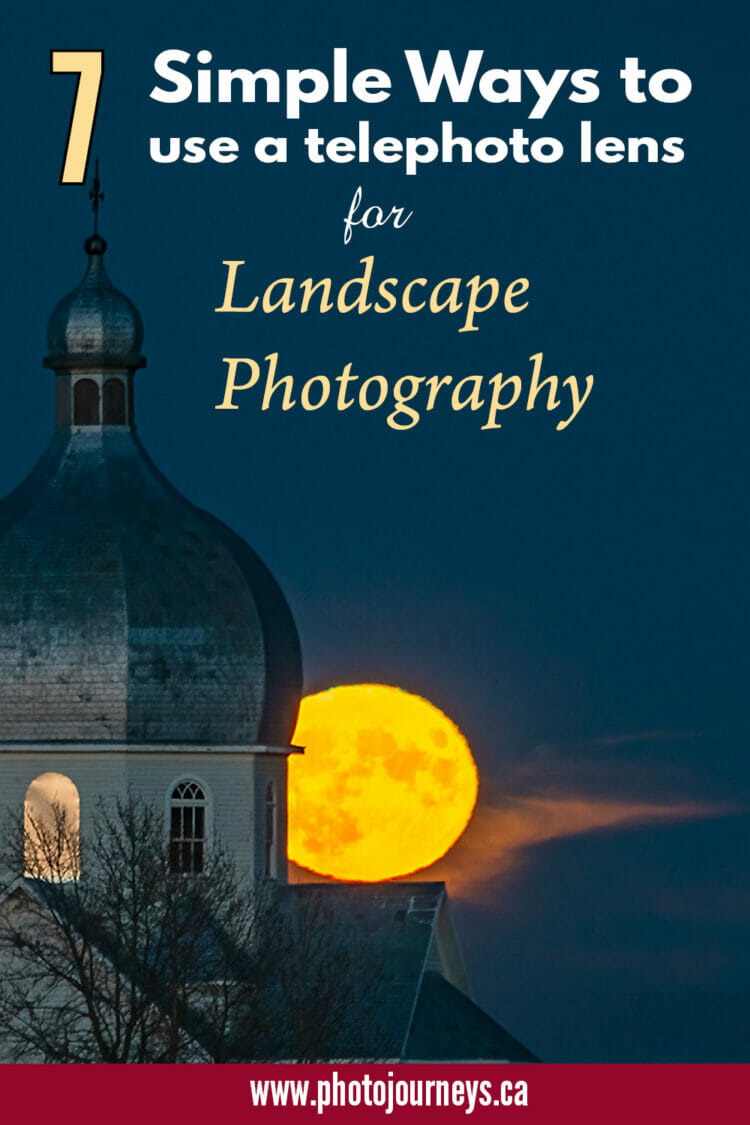
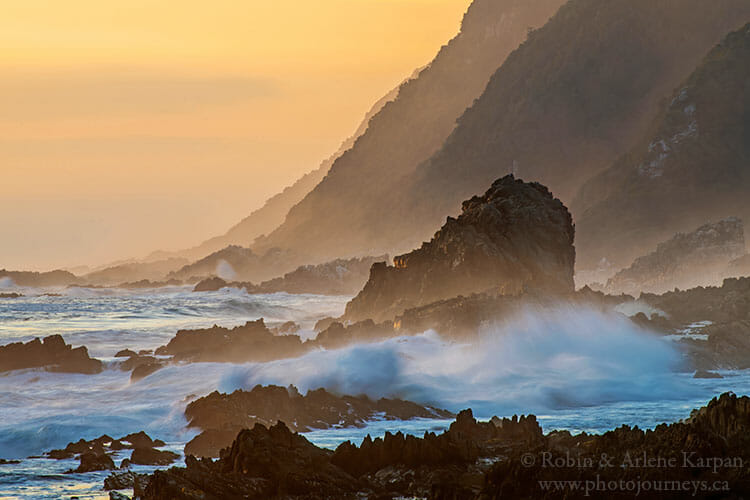
When we think of landscape photography, we usually visualize grand sweeping scenes captured with a wide-angle lens. While a wide perspective is usually still the best option in most cases, there are some situations where a longer telephoto lens might be preferable for the artistic vision that we’re after.
A telephoto lens is generally considered any focal length that is longer than our so-called “normal” field of view, which is around 60mm or so, and that magnifies the subject. Many mid-range zoom lenses, such as a 24-120mm lens, have both wide-angle and telephoto capabilities. Lenses that are strictly telephoto come in a wide array of focal lengths such as 70-200mm, 100-300mm, 80-400mm, or 600mm to name only a few, and can be either zooms or prime lenses (those with a fixed focal length).
1 – Telephotos allow us to photograph difficult to reach places
Some places are difficult or impossible to get to, so a telephoto lens can bring the landscape to us instead. It might be a small rocky island just offshore, a rugged coastline such as in the opening photo where it is treacherous to walk, or a mountain peak.
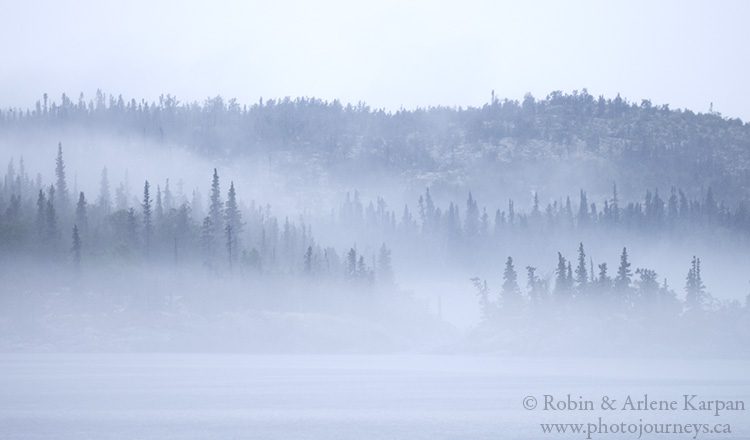
2 – It makes it easier to eliminate distractions
Sometimes we come across a beautiful scene but not all of it is beautiful. A highway may run in front, a construction site is to one side, or attractive light is illuminating only part of the scene. A wide lens takes everything in, but with a telephoto you can zoom in to the part that caught your eye.
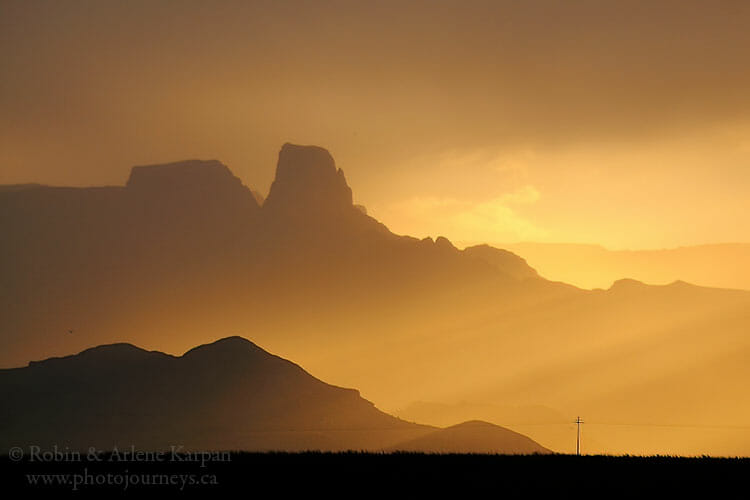
3 – We can increase the size of the sun or moon
If you want to emphasize the size of the sun or moon in your image, a telephoto is definitely the best choice. With a wide-angle lens, any objects in the background, including the sun or moon, might seem abnormally small. With a telephoto lens, it’s possible to make the sun or moon seem a lot larger in relation to your subject, even humungous if you use a lens in the 300-600mm range. The trick here is to also pick a vantage point that is far enough away from your subject so that you zoom in on it. For really long telephotos such as 500-600mm this could be a kilometre away or more. The longer the focal length, the more we need to pay attention to the depth of field to keep everything in focus – details on how to do this will be the topic in an upcoming posting.
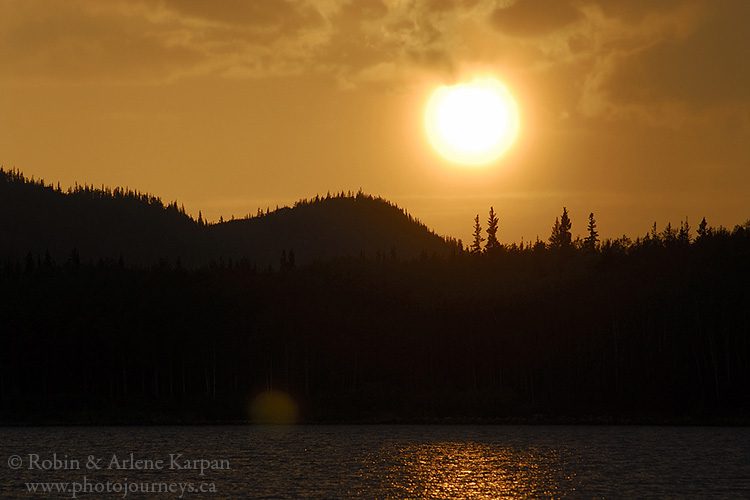
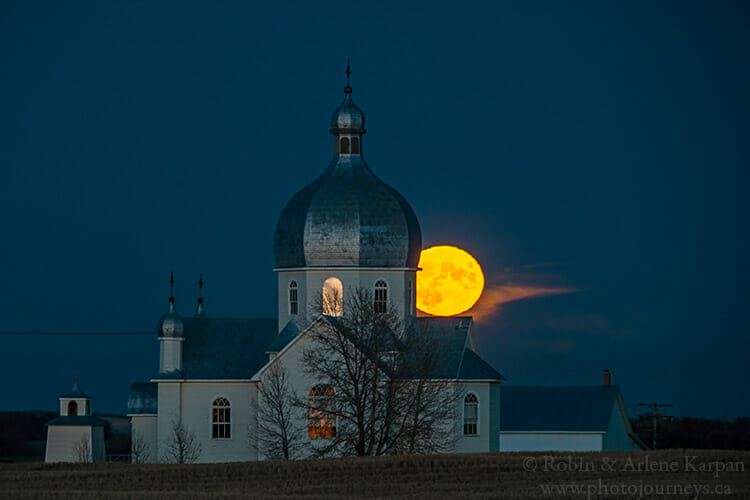
4 – Telephotos can give us a more intimate view of the landscape
Sometimes it’s a piece of the landscape that catches your eye rather than the overall scene. So why photograph more of the terrain than is necessary? Including only what is necessary is good advice no matter what lens you’re using, but a telephoto helps us to zero in on a small part of the scene.
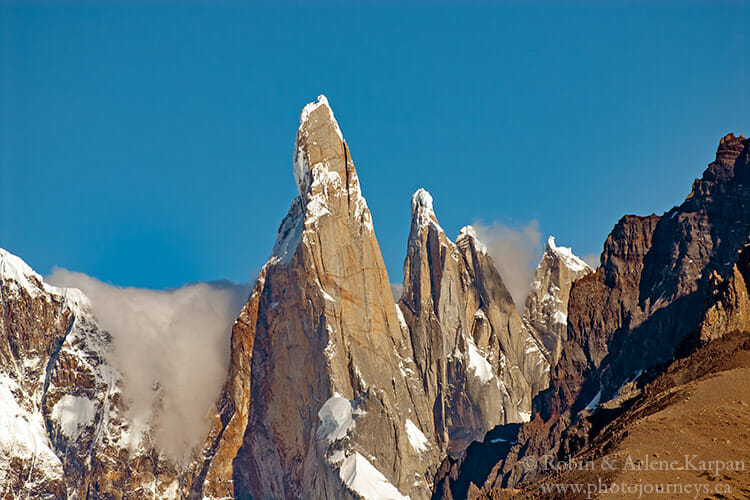
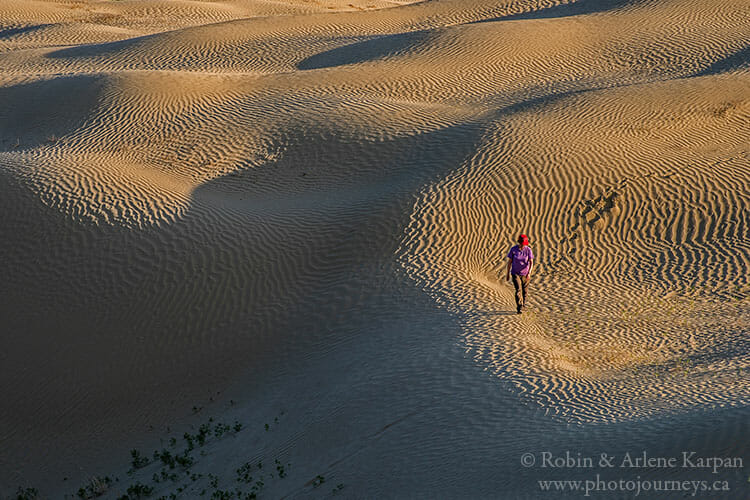
5 – Telephotos multiply your photographic possibilities
Using a wide-angle lens at a photogenic viewpoint gives a limited perspective, unless you wait for changing light or move around to find other angles. But with a telephoto it’s possible to get several different images from the same spot.
Let’s say that you’re looking over a valley with a river, trees lining the water are turning golden in the autumn, and the background is a line of mountain peaks. That would probably make a great wide-angle shot, but why stop there? Switching to a telephoto lens opens up possibilities such as zooming in on a particularly colourful clump of trees, reflections in the river, or a specific rugged-looking mountain face.
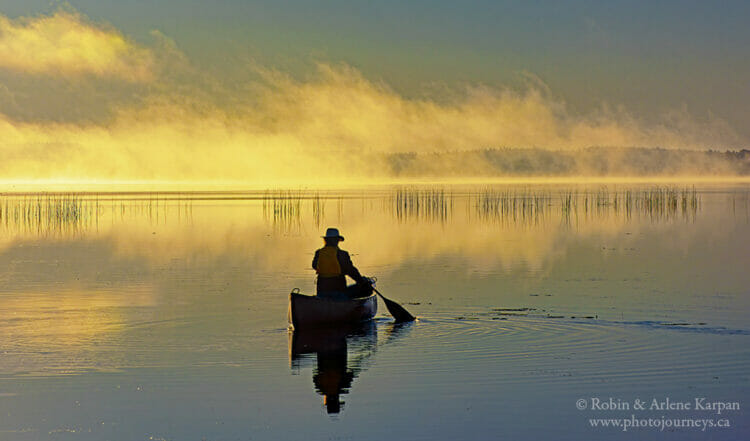
6 – Telephotos enhance layers in your composition
Landscape layers can become a compelling part of the composition. But with a telephoto lens, the layers seem more compressed, often making them appear as if they are overlapping.
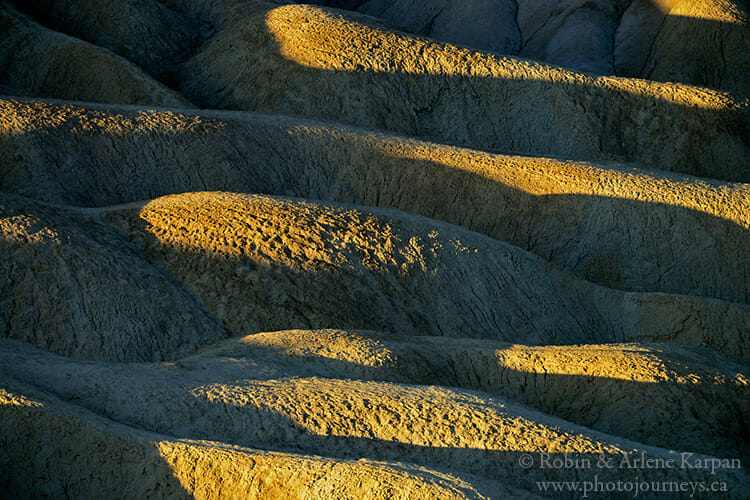
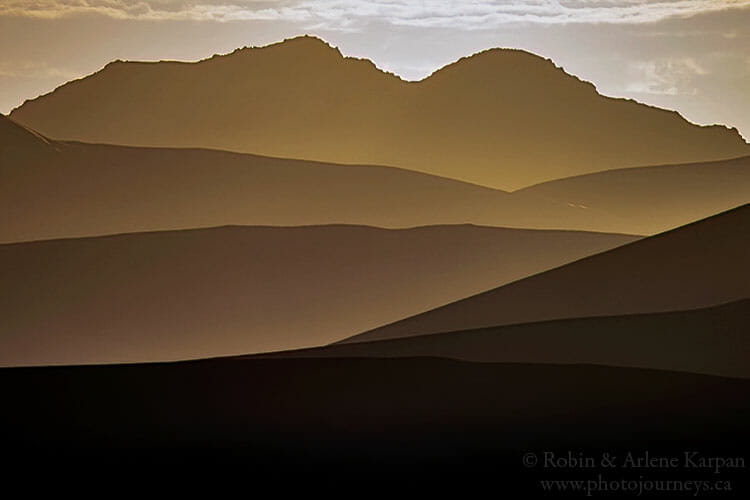
7 – It’s easier to de-emphasize a bland sky
A successful grand overview landscape using a wide-angle lens usually requires both the land and sky to be attractive. But sometimes Mother Nature doesn’t cooperate and hands us a bland, non-descript sky, even though the rest of the scene may look inviting. An option using a wide lens is to point the camera down more, decreasing the amount of sky in the frame or even eliminating it. This may or may not work, depending on the scene. By switching to a telephoto lens, it opens up more options in framing the scene while decreasing emphasis on the sky.

Choosing a telephoto lens
The good news is that choosing a telephoto lens for landscapes is easier, and a lot less expensive, than choosing one for wildlife. For wildlife, we usually want a fairly “fast” lens, such as f/4 or f/2.8 so that we can use fast shutter speeds to stop the action, and get a shallow depth of field so that the critter stands out from the background. But for landscape photography we usually want more depth of field, so usually (though not always) we use f-stops such as f/8, f/11, or f/16. So we don’t need a fast lens which is both more expensive and heavier to carry.
For us, this isn’t an issue when we are travelling by car, since we almost always have our longer telephotos along that we use for wildlife. We simply use these if the opportunity for a landscape shot comes up. But when hiking where keeping weight down is more of a concern, our go-to telephoto is a Nikon 100-300mm f/4.5-f/5.6 lens (most other camera brands also have similar lenses) which is compact, lightweight, and fairly inexpensive, but does the job when we want a longer reach.
When choosing between wide-angle and telephoto lenses, it shouldn’t be looked at as an either-or, but rather as using whatever makes the most sense in the circumstances. Wide-angle is still the best bet for most landscapes, but including telephotos as well opens creative possibilities.
SUBSCRIBE to Photojourneys below
Feel free to PIN this article
